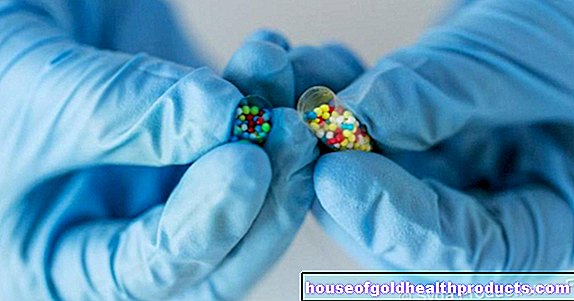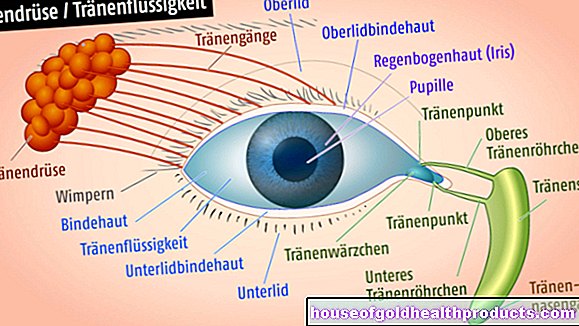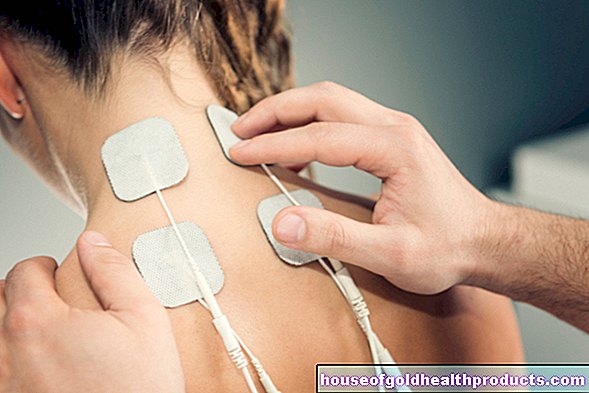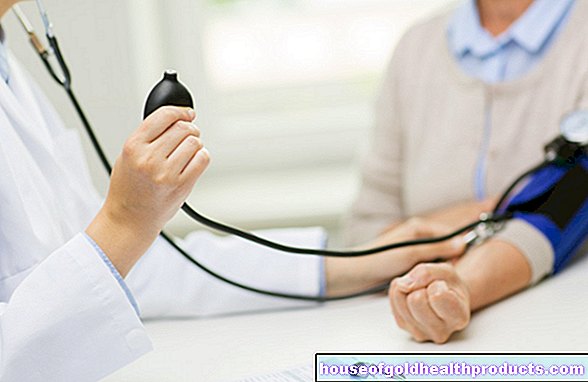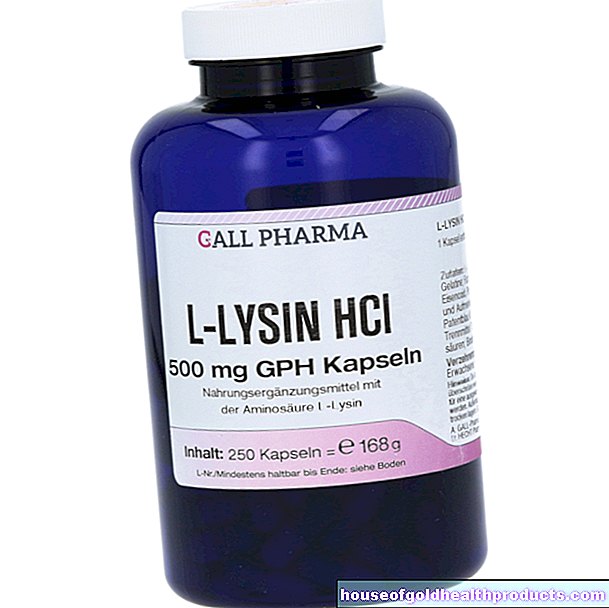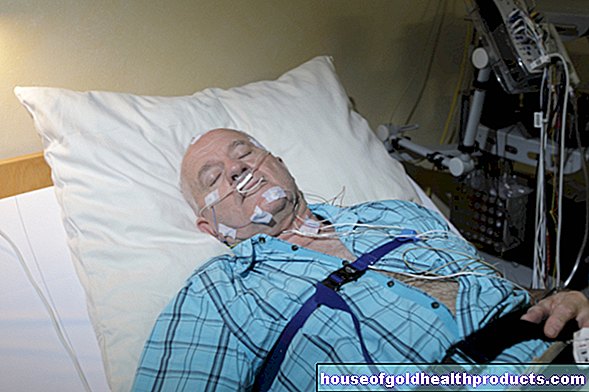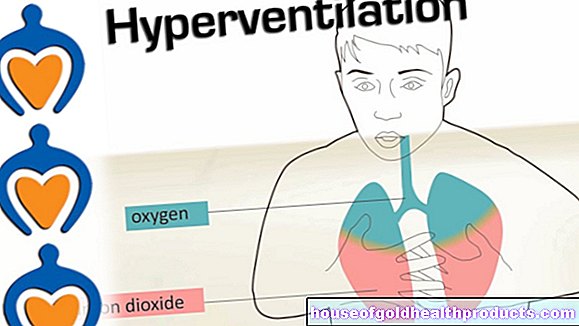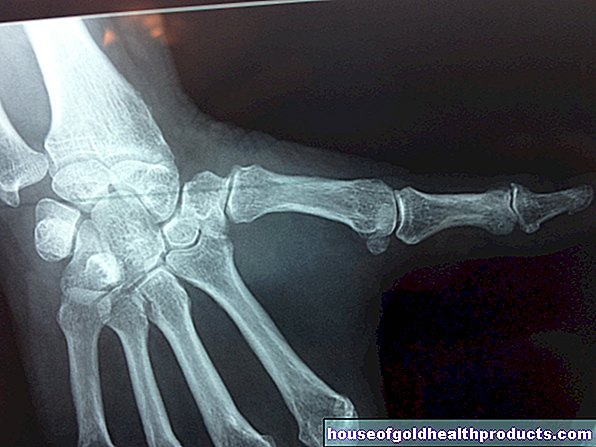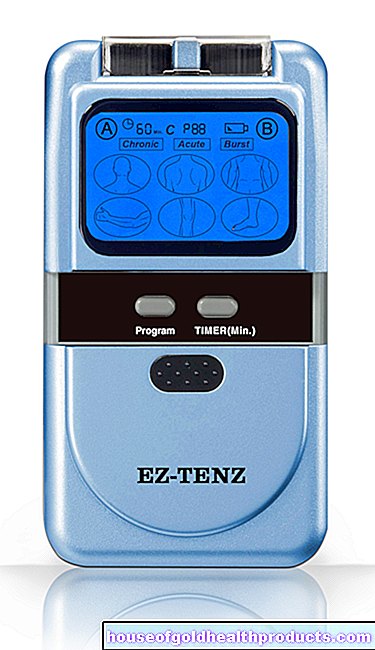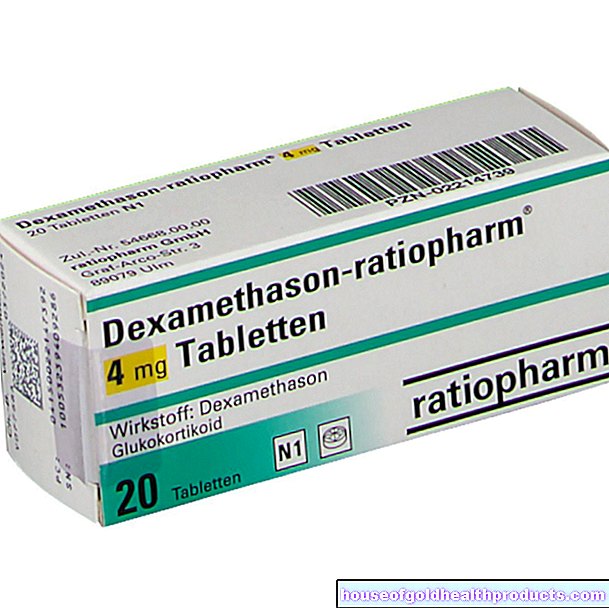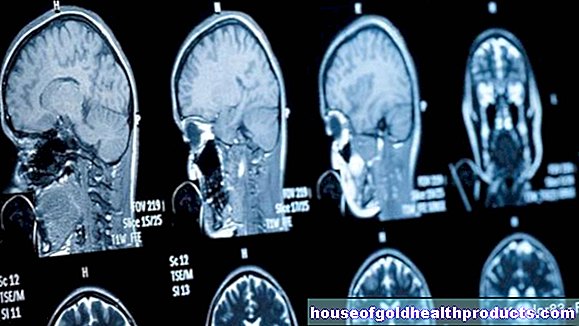Verapamil
All content is checked by medical journalists.The active ingredient verapamil is used in the treatment of cardiac arrhythmias, coronary artery disease and high blood pressure. The application is mostly in the form of tablets. In some cases, treatment with verapamil causes side effects such as dizziness, headache, facial flushing, and swollen ankles. Here you can read everything you need to know about verapamil.
This is how verapamil works
In order for the heart muscle to regularly pump blood around the body, its cells must be stimulated evenly. This excitement recedes again and again in between. So-called ion channels in the cell membranes are involved in these processes: certain charged particles (ions) flow into and out of the cells when they are excited or when they are regressed.
In the case of cardiac arrhythmias, this steady alternation between excitation and regression of the excitation is disturbed: As a result, the heart muscle can no longer contract rhythmically - the result is an irregular heart rate. If such irregularities occur frequently, adequate blood flow to the body is no longer guaranteed. In this case, treatment with so-called antiarrhythmics (agents against cardiac arrhythmias) may be necessary.
A representative of these antiarrhythmics is the active ingredient verapamil. It blocks a certain ion channel (calcium channel) and thus inhibits excessive excitation of the heart muscles. This normalizes the heart's beating rate.
In addition, there is a dilatation of the blood vessels in the heart and thus an improved blood flow. This effect is particularly desirable in coronary heart disease, in which the poor blood flow to the coronary arteries leads to a reduced oxygen supply to the cells.
The vasodilating effect of verapamil is also used to normalize high blood pressure (hypertension).
Verapamil uptake, breakdown and excretion
After ingestion through the mouth (orally), the active ingredient is almost completely absorbed from the intestine into the blood. This is followed by a rapid breakdown, especially in the liver. The degradation products, some of which are still effective themselves, are then slowly excreted via the kidneys.
When is verapamil used?
The areas of application (indications) of verapamil include:
- Irregular heartbeat (arrhythmias)
- High blood pressure (essential hypertension)
This is how verapamil is used
Usually verapamil is taken in pill form. The usual daily dose in all areas of application (indications) is between 240 and 360 milligrams. More active ingredient is only required in very rare cases.
Children, adolescents and patients with liver problems receive a reduced dose.
It is important that the appropriate dose is determined slowly increasing. If too much verapamil is given too quickly, the vasodilator effect can lead to a sudden drop in blood pressure. The drug should also be discontinued slowly (gradually).
What are the side effects of verapamil?
Frequently, i.e. in one to ten percent of those treated, verapamil can cause side effects such as dizziness, headache, sudden flushing and swollen ankles (ankle edema). It can also cause a slow heartbeat (bradycardia).
Verapamil rarely causes a heart conduction disorder (AV block), constipation (constipation), skin reactions and gum growths.
What should be considered when taking verapamil?
Medicines containing verapamil should not be taken if you have had a heart attack or have severe high blood pressure in the past eight weeks.
Interactions
After being absorbed into the blood, verapamil is immediately subject to major restructuring and degradation in the liver. If you also take drugs or substances that influence this conversion process, the effect of verapamil can be increased or decreased.
The following substances increase the verapamil effects and side effects:
- Antifungal agents (such as clotrimazole, ketoconazole, or itraconazole)
- certain antibiotics (such as erythromycin or clarithromycin)
- other medicines for high blood pressure (such as bisoprolol, metoprolol, ramipril)
The following agents reduce the effect of verapamil by accelerating the breakdown:
- Phenytoin (anti-epilepsy drug)
- St. John's wort (remedy for mild depressive moods)
Verapamil, for its part, can increase the effects of the following substances:
- alcohol
Driving and using machines
Because of the possible side effects of dizziness, particular attention should be paid to individual tolerability at the start of therapy. Experts recommend that you decide together with the attending physician whether you can actively drive or operate heavy machinery during treatment.
pregnancy and breast feeding period
So far, there is very little experience with the use of verapamil during pregnancy and breastfeeding. It is known that the active ingredient can reach the child through the placenta (mother cake) and breast milk. Because a harmful effect on the child cannot be ruled out, experts recommend using a tried and tested drug for high blood pressure (such as alpha-methyldopa) during pregnancy and breastfeeding if possible.
How to get medication with verapamil
The treatment of a chronic condition such as high blood pressure or cardiac arrhythmias needs to be checked regularly by a doctor. This is why drugs containing verapamil require a prescription. You can get them with a prescription from your doctor at the pharmacy.
Since when is verapamil known?
Verapamil has been known as an active ingredient against cardiac arrhythmias since the 1960s (approval as a drug in the Netherlands in 1963). Due to its combined effect against cardiac arrhythmias and high blood pressure, verapamil is one of the most important active ingredients in the field of cardiovascular diseases.
Tags: teeth gpp sports fitness